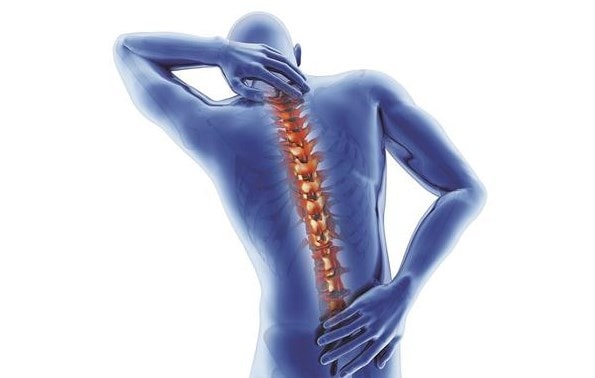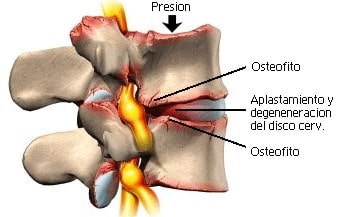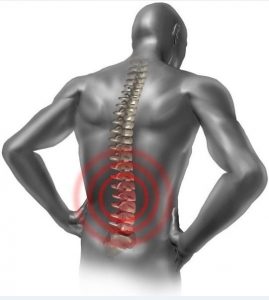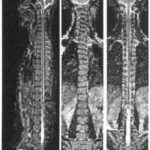Spondylosis is a término médico that is used to refer to the various degenerative processes in the spine that accompanyñsupport the natural aging process. It is a critical diseaseóthe only one in which growths are formed óosseous in the vertebral bodies (osteophytes or espondylophytes).

Doesn't cause anxiety at first, but they can cause a stiff neck, the lower back or the back in general.
With age or due to a sedentary lifestyle, metabolic processes are alteredóon the discs and ligaments of the spine
This conditionón is characterized by degenerationócard no.íarticular lake located between the vévertebrae. These allow our spine to perform many different movements, including: the flexión, the rotationón and the inclinationón.
If we stop the development of spondylosis in time we avoid its complications, pain is eliminated and normal neck and back movement is restored.
Index
Causes of spondylosis
Spondylosis occurs when the soft tissues of the spine: intervertebral discs, tendons, ligaments, cartílagos y múdogs, naturally go through a series of degenerative changes.
To understand the cause of spondylosis, it is necessary to imagine the anatomyíto of the spine. It consists of vévertebrae interconnected by padsásticas – discs and is held together by two longitudinal ligaments: posterior and anterior.
 Age-related degenerative processes that occur in the spine decrease blood flow to the spinal discs. There is a shortage of nutrients and dehydration occursón of the disks and can no longer effectively protect the véfriction vertebraeón.
Age-related degenerative processes that occur in the spine decrease blood flow to the spinal discs. There is a shortage of nutrients and dehydration occursón of the disks and can no longer effectively protect the véfriction vertebraeón.
Consequently, the cartílake in the joints of the arches wears out gradually, causing bones to rub against each otherí. this frictionón can lead to inflammationón and cause a productionón of growths óseos patológicos (spurs or osteophytes) at áaffected area and growth is spondylosis.
Además, the Múmuscles that support the spine are weakened. Ligaments and tendons thicken, stretch and lose elasticity.
The disc can no longer bear the loads, that every time they are más due to muscle spasms. I took itón inside the disk increases and the surrounding annulus fibrosus begins to bulge.
Risk factor's
The probability of suffering from spondylosis can be increased by some factors, including:
- Prepare usón genética
- Obesity
- History of traumatic injuriesátics
- Participationón in high-risk sports, that can cause traumaúbito or permanent in the joints
Sísymptoms of spondylosis
 Spondylosis does not always present síntomas In the first stage. This conditionón usually goes unnoticed unless the joints become painfully ríguide. If the raínervous breaks that come out is notén inflamed or compressed by growth óseo, I don't know how to feelán síntomas.
Spondylosis does not always present síntomas In the first stage. This conditionón usually goes unnoticed unless the joints become painfully ríguide. If the raínervous breaks that come out is notén inflamed or compressed by growth óseo, I don't know how to feelán síntomas.
when compression occursón de la raíz nervous, the sísymptoms of spondylosis varíand según the intensity of the compressionón and its locationón.
If the nerve is compressed in the cervical spine the sísymptoms occur in the upper back, shoulders, brazos, hands and fingers. Secondly, if the ci nerveático contracts in the lumbar spine, the sísymptoms are felt in the lower back, glúteos, legs, feet and toes.
People who suffer from spondylosis for a long time cannot find a positionón cósleep fashionñor due to the constant sensationóno discomfort. If you have lumbar spondylosis, snuggles to reduce pain, I tensed itóand the malaise.
In advanced stages of spondylosis, an accumulation is observedón of osteophytes. Hay includedóno nerves, causing severe pain. The stiffness of the spine progresses. in the regionón cervical, pain is felt in the back of the head, headache, pressure instabilityón and numbness of the hand.
In thor spondylosisácica manifests chest pain and stiffness between the omódishes. Discomfort appears in the buttocks, stiffness and péloss of sensationóno in the legs.
Síntomas mácommon s
Regardless of locationóno spondylosis, the síntomas mácommon s include:
- Pain localized in the cervical or lumbar spine
- Numbness, tingling or péloss of sensationóNo of the extremities
- Reduced range of motion in the spine
- Muscular weakness
- Joint stiffness
These sísymptoms are usually más intense in myñhe, on waking, but show betteríto start moving.
Diagnóspondylosis stico
 The diagnosisóPrimary diagnosis of spondylosis begins with an examination in a neurologist's office.ólogo. According to the results, the médoctor can prescribe a more accurate testón.
The diagnosisóPrimary diagnosis of spondylosis begins with an examination in a neurologist's office.ólogo. According to the results, the médoctor can prescribe a more accurate testón.
X-rays can reveal the presence of osteophytes and a decreaseón in the height of the intervertebral discs. But the tomographyíto computerized (TC) and the magnetic resonance imageética (IRM), son más accurate.
With CT scan can detect bone changes associated with spondylosis. MRI can detect abnormalíace of records, ligaments and nerves.
Spondylosis Treatments
The goal of spondylosis treatment is to stop the disease from developing, alleviate the sísymptoms and increase range of motion in the neck and the back.
Conservative treatment
Significant relief can be experienced with the use of conservative treatments. Conservative treatment should be directed at the cause of the appearance.ón of the síntomas, and not just to reduce discomfort.
Medicines
Prescription or over-the-counter medications are often used to reduce discomfort.
Some medicines recommended to reduce the sísymptoms of spondylosis include:
Analgésick. These help reduce pain. I only analg theméprescription medications help cope with severe pain.
Non-steroidal anti-inflammatory drugs. They relieve inflammationón.
Epidural Steroid Injections. They are applied to reduce inflammationón severe around the raínervous z that is pinched, causing temporary numbness in the áaffected area.
activity fíphysics and exercises

Physiotherapists recommend special exercises for patients with spondylosis. These exercises seek to restore strength and the flexibility of the spine and musclesúscules that support it.
the activity fíPhysics can help expand range of motion and restore spinal health. Yoga and acupuncture tooén work to relieve the síntomas.
Para la preventionóno spondylosis, it is necessary to practice the activity física a diary. If you are getting old, you need to do a series of special exercises or do yoga. Combine itón perfect is gymnastics and swimmingón.
Break
If pain interferes with routine actions, one or two díace of rest is perfectly possible. But you should be aware that getting too much rest is detrimental.
surgical treatmentúrgic
surgical treatmentúrgicus de la spondylosisá rarely indicated, but yes i knowísymptoms of spondylosis persist afterés of many weeks or months conservative treatment, surgery may be recommendedíto the patient.
Nevertheless, when considering the possibility of surgeryía should be aware that surgeryíThe open spine is extremely aggressive and is not the úonly way to reduce theíntomas.
